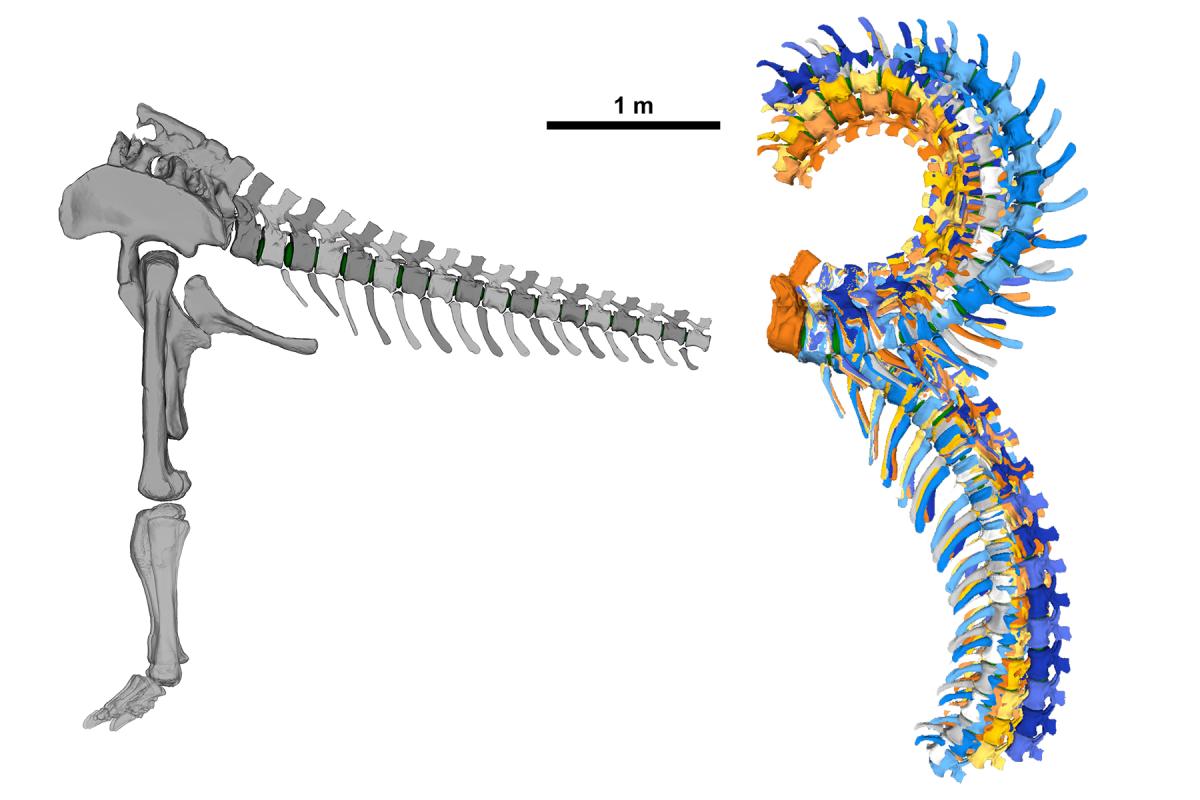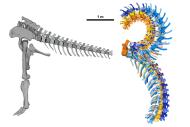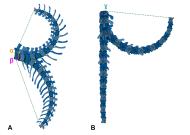An international research team led by Dr Verónica Díez Díaz from the Museum für Naturkunde Berlin has used new digital 3D reconstructions to gain detailed insights into the mobility of the tail of the sauropod Giraffatitan brancai. The results of the study, published in the journal Royal Society Open Science, provide insight into the biomechanical capabilities of one of the largest dinosaurs that ever lived.
The researchers analysed 18 preserved caudal vertebrae and haemal arches from a relatively complete tail of a specimen of Giraffatitan brancai, which is in the collection of the Naturkundemuseum today. Until now, dinosaur tails have frequently been neglected in research - although they play a central role in balance, locomotion, communication and defence.
Specific 3D computer programmes were used to test the movement of the individual vertebrae against each other. Which muscular forces played a role? Where did the muscles attach to the bones? Which mobility and movement sequences resulted from this?
'Our analyses show that the tail of Giraffatitan was much more mobile and functionally complex than previously assumed,' explains Díez Díaz. Particular attention was paid to the so-called haemal arches - bony structures on the underside of the caudal vertebrae - which often went unnoticed in previous studies. The results suggest that these elements had a significant influence on the mobility of the tail.
These detailed mobility models confirm what has already been realised in the exhibition at the Berlin Natural History Museum: Sauropods did not drag their tails immovably behind them. Instead, they lifted their tails and were able to move them flexibly in several directions.
These findings are important for understanding the posture, movement and possibly even the social interactions of these giant herbivores. The research not only offers new perspectives on the anatomy of sauropods, but also provides valuable impulses for future reconstructions and palaeobiological interpretations.
Publication:
Díez Díaz, V. et al. (2025): Functional morphology and mobility of the tail of the sauropod dinosaur Giraffatitan brancai.



